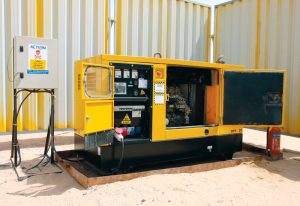 When is nitrile rubber the right choice for sealing and insulation? This common elastomer is known by many names, including Buna-N, NBR, and acrylonitrile butadiene. There are plenty of trade names for nitrile, too. No matter what you call it, nitrile rubber offers good resistance to oils, fuels, and chemicals. Temperature and environmental conditions are limiting factors, however, and may require the selection of a more expensive material such as Viton™.
When is nitrile rubber the right choice for sealing and insulation? This common elastomer is known by many names, including Buna-N, NBR, and acrylonitrile butadiene. There are plenty of trade names for nitrile, too. No matter what you call it, nitrile rubber offers good resistance to oils, fuels, and chemicals. Temperature and environmental conditions are limiting factors, however, and may require the selection of a more expensive material such as Viton™.
In this article from Elasto Proxy, you’ll learn about nitrile’s advantages and disadvantages. You’ll also examine NBR compounds, compare commercial and specialty Buna-N, and consider some typical nitrile applications. Elasto Proxy supplies specialty nitrile products to a variety of industries and can create a custom sealing solution that meets your specific requirements. Nitrile isn’t the only oil-resistant elastomer, but it’s a cost-effective choice compared to some other compounds.
Nitrile Advantages and Disadvantages
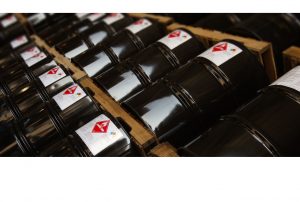 Nitrile rubber provides good-to-excellent resistance to many oils and solvents. Examples include:
Nitrile rubber provides good-to-excellent resistance to many oils and solvents. Examples include:
- animal and vegetable oils
- crude petroleum oil
- kerosene and gasoline
- liquified petroleum (LP) gases
- motor oils
- mineral oil based hydraulic fluids
- silicone greases and oils
For engineers and buyers, it’s important to understand that nitrile’s resistance to petroleum oils is limited by temperature. According to most chemical resistance charts, nitrile resists petroleum oil at temperatures up to 250° F (121° C). If your application requires both oil resistance and higher temperature resistance, a fluorocarbon such as Viton™ may be required instead. Nitrile is also unsuitable for highly polar solvents such as acetone, which is used in some food processing and medical applications.
Nitrile’s advantages include good physical properties such as resistance to compression set, tearing, and abrasion. Typically, NBR or Buna-N comes in durometers (Shore A) ranging from 20 to 95 for applications that require a softer or harder rubber. Nitrile resists water, but provides poor resistance to weather, ozone, and aging. Acrylonitrile butadiene is also unsuitable for some applications because Buna-N won’t withstand temperatures that are colder than -40° F (-40° C).
Nitrile Compounds and Specialty Grades
Through compounding, material suppliers have developed different types of nitrile with enhanced material properties. For example, hydrogenated nitrile butadiene rubber (HNBR) can withstand slightly higher temperatures than NBR and provides improved resistance to polar fluids. Carboxylated nitrile butadiene rubber (XNBR) has a higher compression set than Buna-N and offers improved tear and abrasion resistance. Nitrile can also be blended with polymers such as polyvinyl chloride (PVC).
For engineers and buyers, choosing the right type of nitrile may involve comparing commercial rubber to specialty grades. Commercial grades generally cost less and are available in higher minimum order quantities (MOQs). Specialty grades generally cost more and have larger MOQs, but they’re custom compounds with improved properties. ASTM D2000 provides a standard way to describe elastomers and uses the designations BF, BG, BK, and CH with both standard and specialty nitrile. (more…)
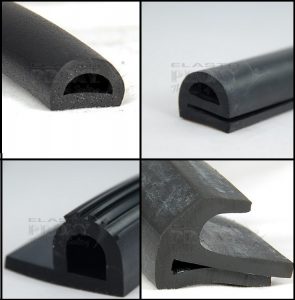 There are four common shapes for extruded rubber seals. Do you know which shape is the right choice for your gasket application? Engineers and seal designers can choose P-shapes, D-shapes, E-shapes, and lip seals. Purchasing agents can either order cut lengths or buy spliced gaskets.
There are four common shapes for extruded rubber seals. Do you know which shape is the right choice for your gasket application? Engineers and seal designers can choose P-shapes, D-shapes, E-shapes, and lip seals. Purchasing agents can either order cut lengths or buy spliced gaskets.
 What are the true costs of industrial rubber products such as seals, gaskets, and insulation? Buying rubber materials and fabricating them in-house may seem cost-effective, but is your company really saving money? For that matter, are you sacrificing quality, consistency, and potential sales opportunities for a questionable cost savings?
What are the true costs of industrial rubber products such as seals, gaskets, and insulation? Buying rubber materials and fabricating them in-house may seem cost-effective, but is your company really saving money? For that matter, are you sacrificing quality, consistency, and potential sales opportunities for a questionable cost savings?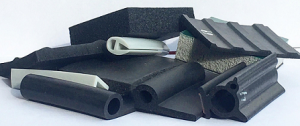 What’s the best way to cut industrial rubber products like seals, gaskets, and insulation? Manual cutting, die cutting, water jet cutting, and abrasive water jet cutting each offer advantages. They also meet different business and technical requirements. As this article from Elasto Proxy explains, choosing the right cutting method for your application requires a complete and careful analysis.
What’s the best way to cut industrial rubber products like seals, gaskets, and insulation? Manual cutting, die cutting, water jet cutting, and abrasive water jet cutting each offer advantages. They also meet different business and technical requirements. As this article from Elasto Proxy explains, choosing the right cutting method for your application requires a complete and careful analysis.  When is nitrile rubber the right choice for sealing and insulation? This common elastomer is known by many names, including Buna-N, NBR, and acrylonitrile butadiene. There are plenty of trade names for nitrile, too. No matter what you call it, nitrile rubber offers good resistance to oils, fuels, and chemicals. Temperature and environmental conditions are limiting factors, however, and may require the selection of a more expensive material such as Viton™.
When is nitrile rubber the right choice for sealing and insulation? This common elastomer is known by many names, including Buna-N, NBR, and acrylonitrile butadiene. There are plenty of trade names for nitrile, too. No matter what you call it, nitrile rubber offers good resistance to oils, fuels, and chemicals. Temperature and environmental conditions are limiting factors, however, and may require the selection of a more expensive material such as Viton™. Nitrile rubber provides good-to-excellent resistance to many oils and solvents. Examples include:
Nitrile rubber provides good-to-excellent resistance to many oils and solvents. Examples include: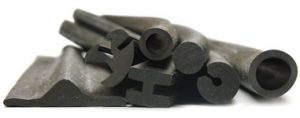 Commercial grade rubber provides sealing and insulation for a wide variety of applications. Compounds such as commercial grade EPDM, silicone, and neoprene also cost less than specialty rubber materials that meet standards, approvals, or regulatory requirements from organizations such as ASTM International, Underwriters Laboratories (UL), and the U.S. Food and Drug Administration (FDA).
Commercial grade rubber provides sealing and insulation for a wide variety of applications. Compounds such as commercial grade EPDM, silicone, and neoprene also cost less than specialty rubber materials that meet standards, approvals, or regulatory requirements from organizations such as ASTM International, Underwriters Laboratories (UL), and the U.S. Food and Drug Administration (FDA).
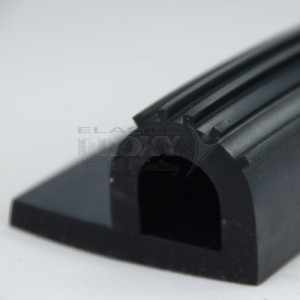
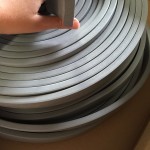 How is silicone rubber used for sealing and insulation? Silicones have valuable properties, but engineers need rubber that meets specific requirements. If you’re wondering whether silicone seals, gaskets, or insulation are the right choice for your application, consider some of the uses for this versatile polymer. The examples you’ll read about aren’t the only uses for silicone, but they’re representative.
How is silicone rubber used for sealing and insulation? Silicones have valuable properties, but engineers need rubber that meets specific requirements. If you’re wondering whether silicone seals, gaskets, or insulation are the right choice for your application, consider some of the uses for this versatile polymer. The examples you’ll read about aren’t the only uses for silicone, but they’re representative. 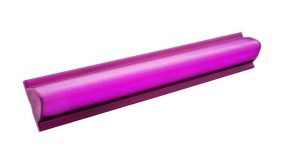 TPE profiles are replacing EPDM rubber in applications such as mobile equipment, food equipment, and infrastructure. Unlike EPDM, thermoplastic elastomers (TPE) are recyclable. That’s especially important in Europe, where manufacturers are moving away from petroleum-based materials.
TPE profiles are replacing EPDM rubber in applications such as mobile equipment, food equipment, and infrastructure. Unlike EPDM, thermoplastic elastomers (TPE) are recyclable. That’s especially important in Europe, where manufacturers are moving away from petroleum-based materials.